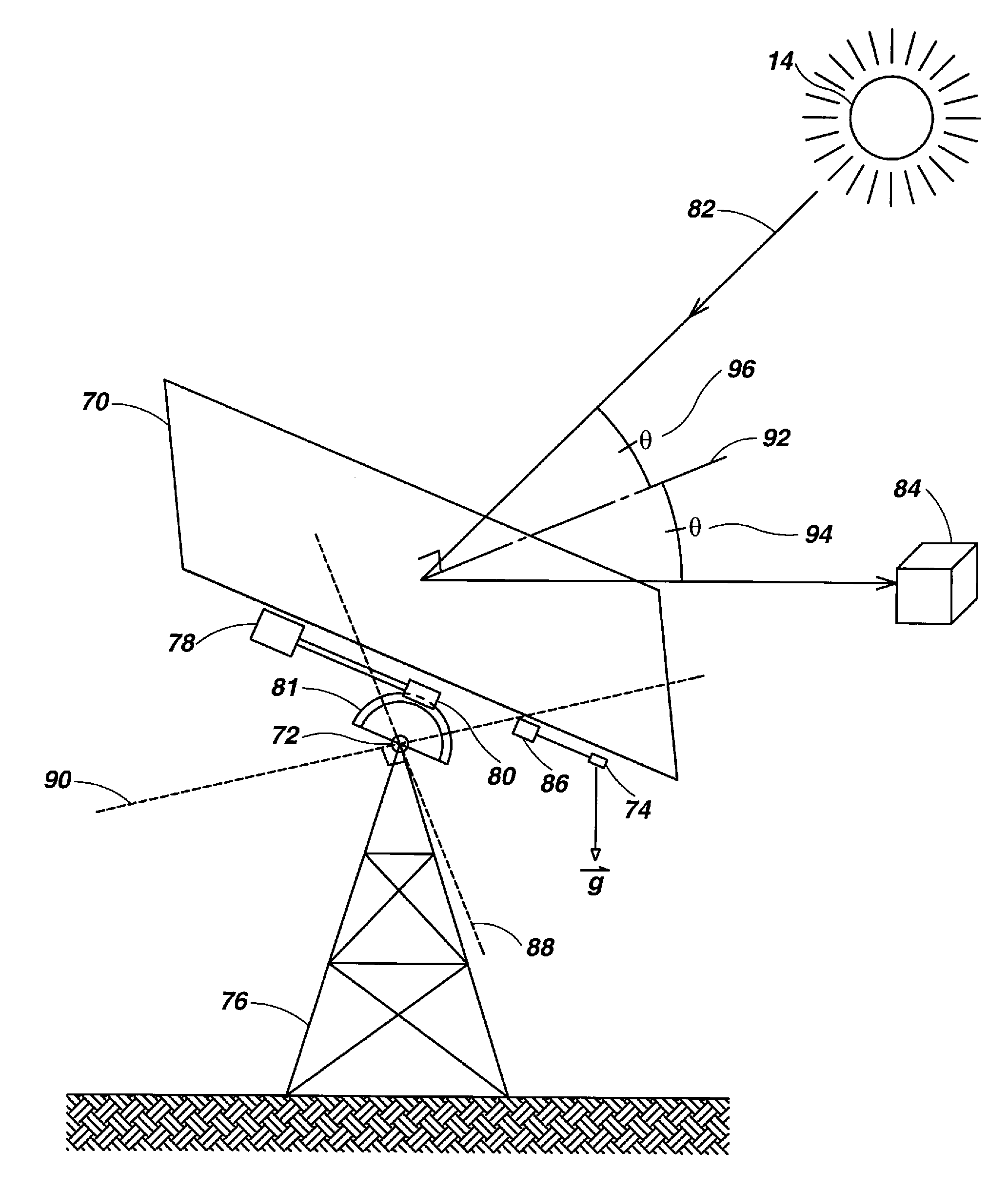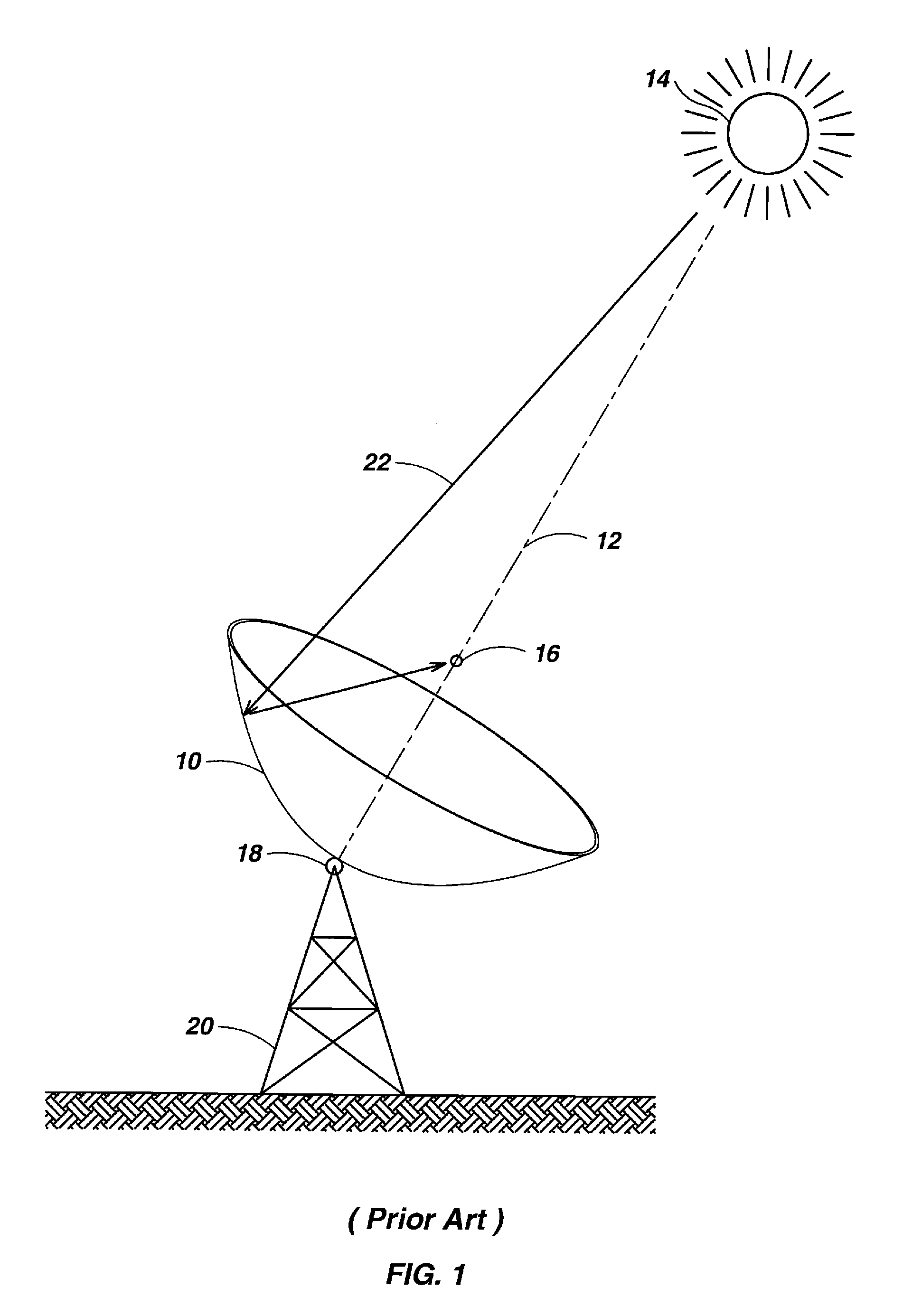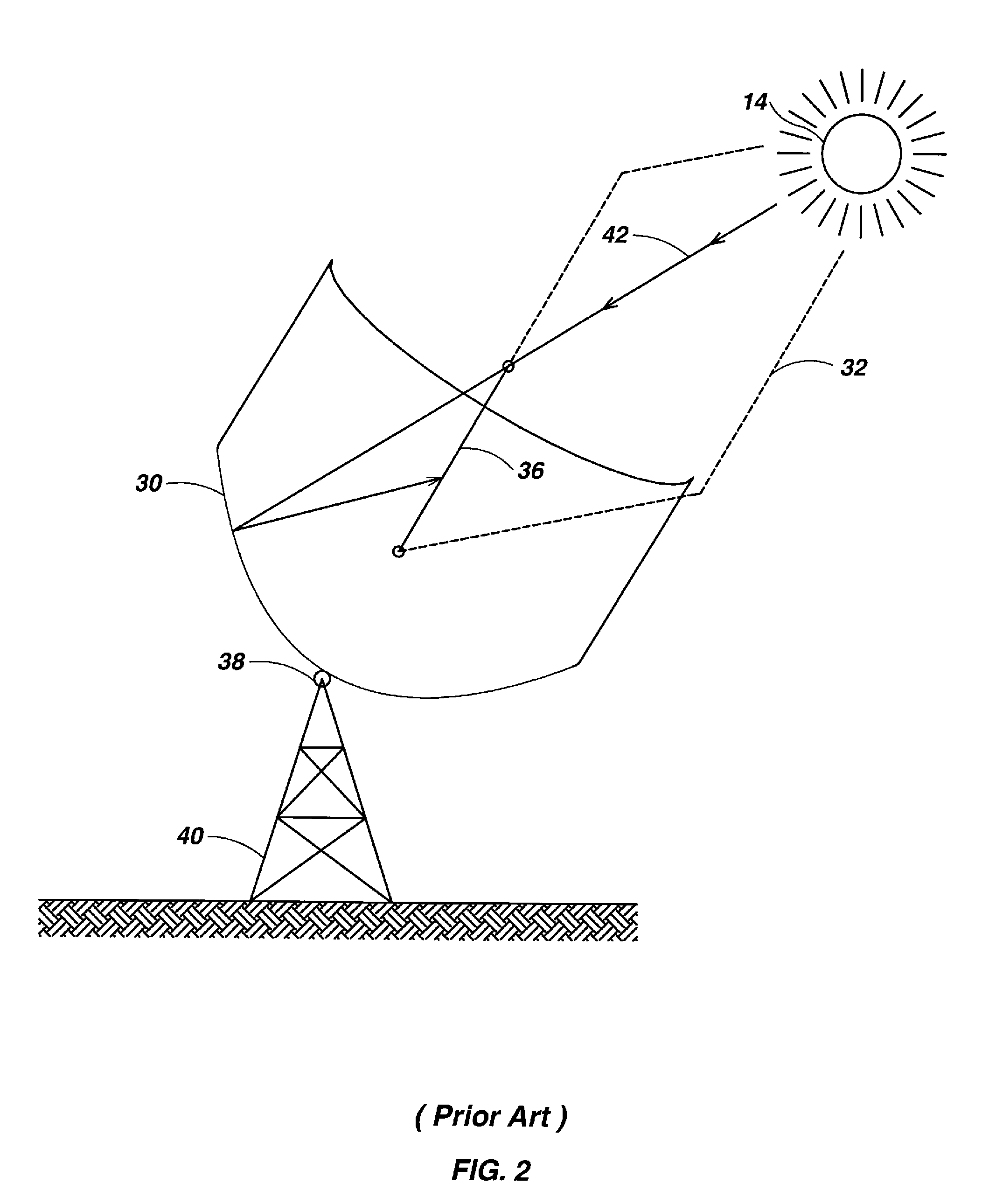Solar Collection Apparatus and Methods Using Accelerometers and Magnetic Sensors
a technology of magnetic sensors and solar collectors, applied in direction finders, lighting and heating apparatus, instruments, etc., can solve the problem that none of these technologies is widely adopted
- Summary
- Abstract
- Description
- Claims
- Application Information
AI Technical Summary
Benefits of technology
Problems solved by technology
Method used
Image
Examples
first embodiment
[0030]FIG. 4 illustrates the present invention that utilizes a flat mirror to heat a target. A solar tracking apparatus has a reflective surface in the form of a mirror 70 for collecting and reflecting incident solar radiation 82 from the Sun 14. The mirror in this embodiment has a planar configuration, although this embodiment could be adapted to use other mirror configurations including parabolic dish, parabolic trough, etc. in order to concentrate the incident solar radiation. The mirror could be conventional silver coated glass, or could be plastic, or could be Mylar® polyester film on a support substrate, or some other form of reflective material that is durable, lightweight and inexpensive.
[0031]The mirror 70 (FIG. 4) is supported by a pair of pivot mechanisms 72 for independent motion about a pair of tilt axes 88 and 90. The pivot mechanisms 72 are mounted atop a support or tower 76. An accelerometer 74 generates signals representative of an amount and direction of motion of ...
second embodiment
[0036]FIG. 5 illustrates the present invention that utilizes an array 104 of individual mirrors 106 to reflect solar radiation 110 through a skylight 102 on the roof of a building 100 to provide internal lighting. This greatly increases the amount of solar radiation otherwise directly entering the interior of the building through the skylight 102 as illustrated by incident light rays 108. The mirrors 106 may each be independently supported and moved as illustrated in FIG. 4 or they may be simultaneously supported and moved by a common tracking system so that reflected light 114 strikes a fixed angle target mirror 112 and is reflected as downwardly projected light 116. The skylight 102 may be of the type sold under the SOLATUBE® trademark which employs a conduit with a highly reflective surface. Optionally a hot mirror 118 may be inserted into the reflected light transmission path to reflect away the infrared component during the Summer to avoid unwanted heating of the interior of th...
embodiment 400
[0045]FIGS. 14-20 illustrate another embodiment of the present invention that utilizes weight-tensioned mechanisms to pivot the mirror. The embodiment 400 includes a planar square mirror 402 whose corners are supported by four cable hook corners 404. A small yoke 406 (FIGS. 15 and 19) has a square surface which is secured to the center of the rear side of the mirror 402 by suitable adhesive. Small yoke 406 is connected for independent rotation about two axes to a tall yoke 408 by a cross piece 410. The base of the tall yoke 408 is secured by screws 412 and nuts 414 (FIG. 19) to a cylindrical cap plate 416. The cylindrical cap plate 416 is mounted on the upper end of a support structure in the form of a hollow vertical support post 418.
[0046]A lower tension wire 420 (FIG. 18) has one end connected to the uppermost cable hook corner 404 and its other end connected to the lowermost cable hook corner 404. An upper tension wire 422 (FIGS. 18 and 19) has an intermediate segment wrapped ar...
PUM
 Login to View More
Login to View More Abstract
Description
Claims
Application Information
 Login to View More
Login to View More - R&D
- Intellectual Property
- Life Sciences
- Materials
- Tech Scout
- Unparalleled Data Quality
- Higher Quality Content
- 60% Fewer Hallucinations
Browse by: Latest US Patents, China's latest patents, Technical Efficacy Thesaurus, Application Domain, Technology Topic, Popular Technical Reports.
© 2025 PatSnap. All rights reserved.Legal|Privacy policy|Modern Slavery Act Transparency Statement|Sitemap|About US| Contact US: help@patsnap.com



